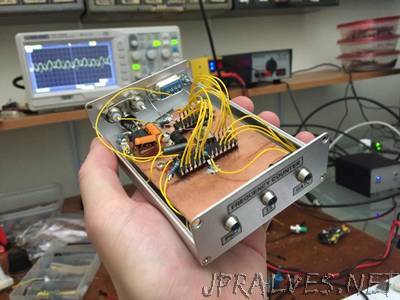
“Projects I build often involve frequency synthesis, and one of the most useful tools to have around is a good frequency counter. Being a budding programmer and data analysis guru, I love the idea of being able to access / log / analyze frequency readings on my computer too. Commercial frequency counters can be large, expensive, and their calibration is a chicken-and-egg problem (you need a calibrated frequency counter to calibrate a frequency reference you use to calibrate a frequency counter!). For about the cost of a latte I made a surprisingly good frequency frequency counter (which directly counts >100 MHz without dividing-down the input signal) by blending a SN74LV8154 dual 16-bit counter (which can double as a 32-bit counter, $1.04 on mouser) and an ATMega328 microcontroller ($3.37 on Mouser). Although these two chips are all you need to count something, the accuracy of your counts depend on your gate. If you can generate a signal of 1 pulse per second (1PPS), you can count anything, but your accuracy depends on the accuracy of your 1PPS signal. To eliminate the need for calibration (and to provide the 1PPS signal with the accuracy of an atomic clock) I’m utilizing the 1PPS signal originating from a GPS unit which I already had distributed throughout my shack (using a 74HC240 IC as a line driver). If you don’t have a GPS unit, consider getting one! I’m using a NEO-6M module ($17.66 on Amazon) to generate the 1PPS gate, and if you include its cost we’re up to $22.07. Also, all of the code for this project (schematics, C that runs on the microcontroller, and a Python to interact with the serial port) is shared on GitHub! You may be wondering, “why do GPS units have incredibly accurate 1PPS signals?” It’s a good question, but a subject for another day. For now, trust me when I say they’re fantastically accurate (but slightly less precise due to jitter) if you’re interested in learning more read up on GPS timing.”
